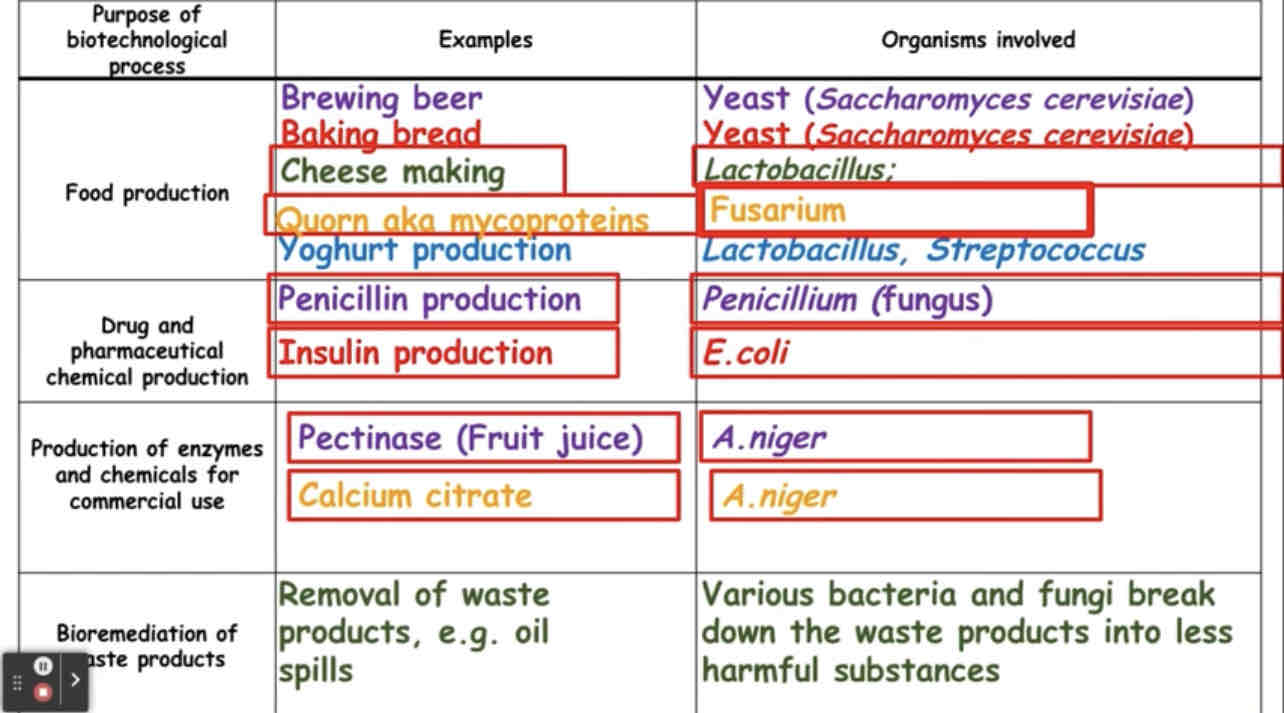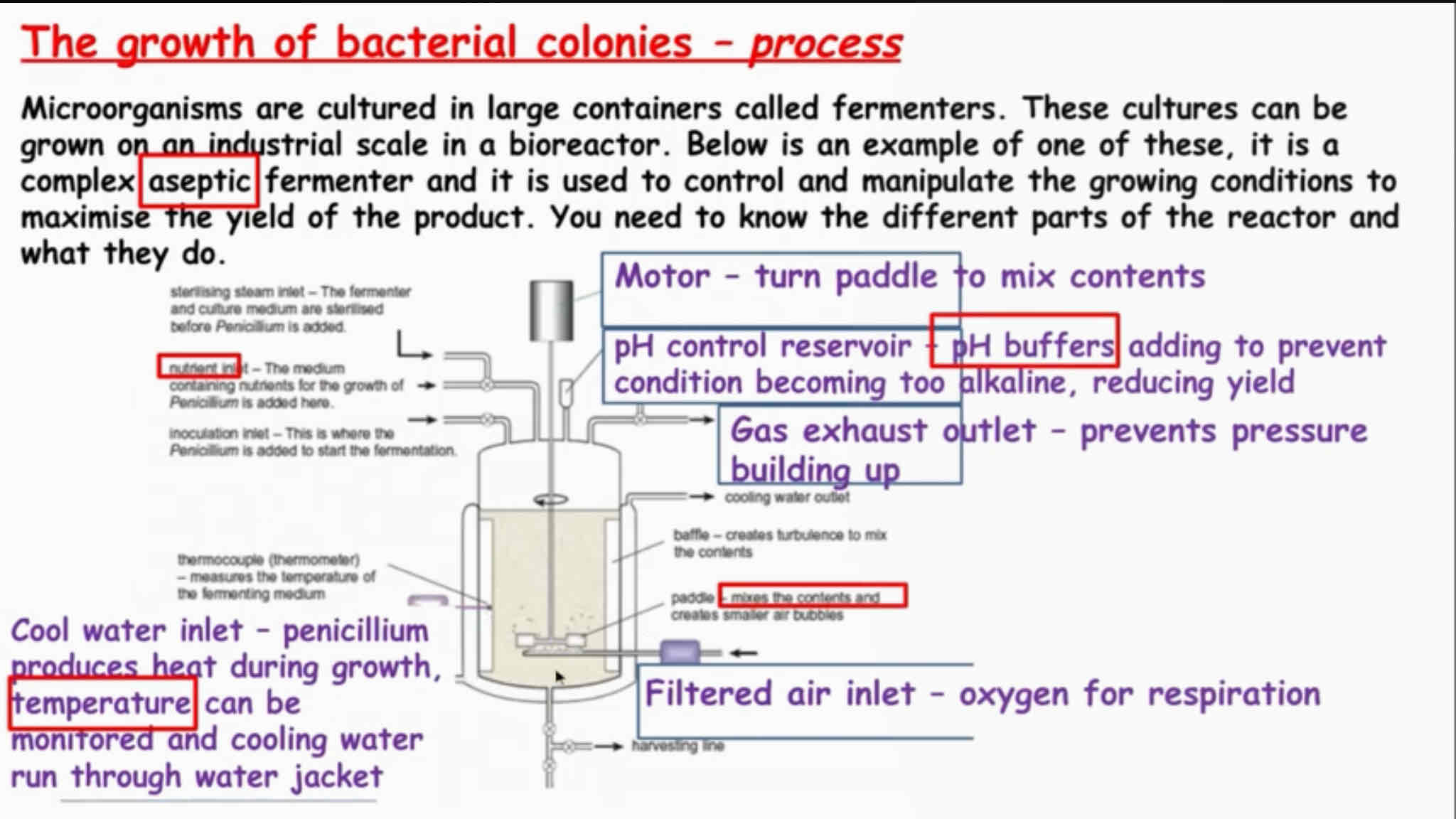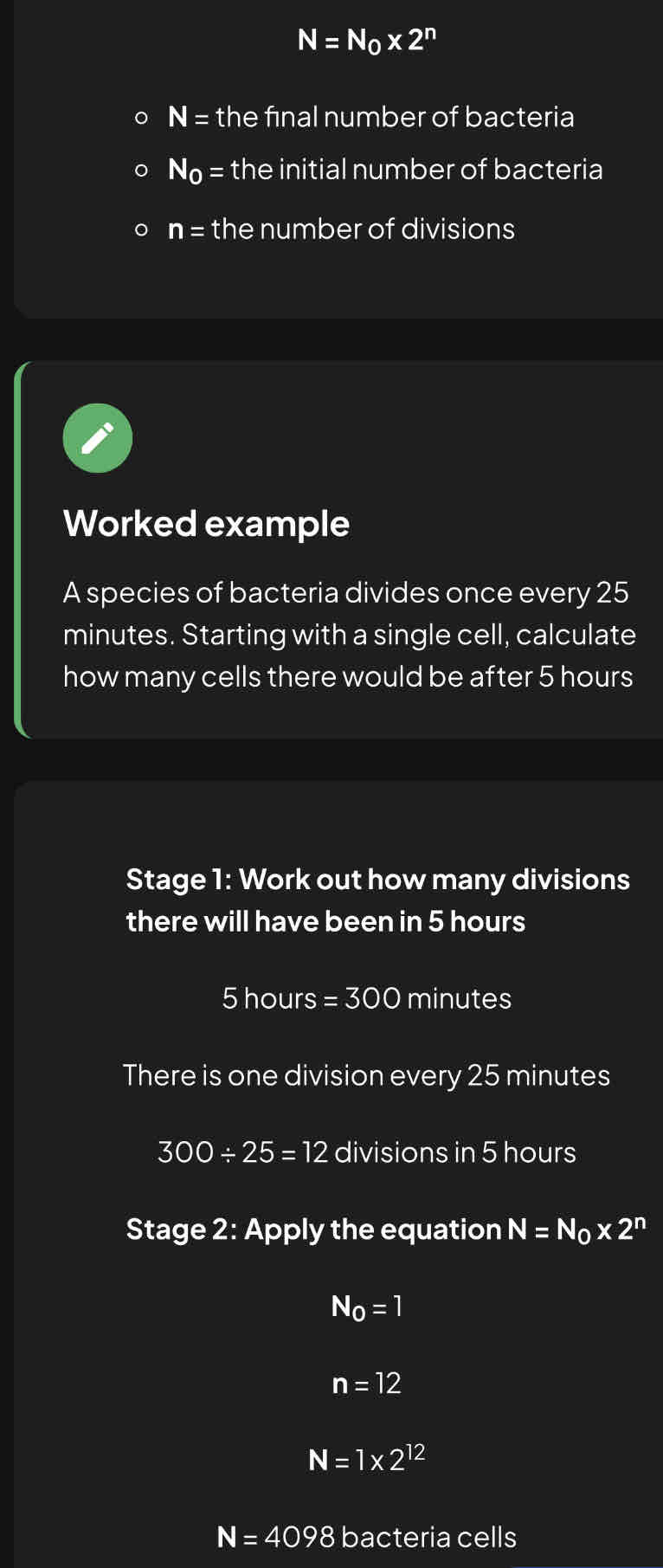Cloning and biotechnology
1/40
There's no tags or description
Looks like no tags are added yet.
Name | Mastery | Learn | Test | Matching | Spaced |
|---|
No study sessions yet.
41 Terms
.
.
They produce genetically identical copies of themselves through asexual reproduction (mitosis)
How do plants eg: strawberries
Low genetic biodiversity meaning they can get disease easier
Problems with uses clones
Use a healthy shoot/ cut shoot from healthy plant Cut stem at slant between nodes Dip end of the stem in rooting powder/auxin Place in soil and add water To reduce transpiration cover with a plastic bag/ remove some leaves
How can we produce clones from cuttings
joining the shoot of one plant to the growing stem (cut at an angle to increase surface area of adhesion) and root of another plant
What is grafting
Cheap Quick compared to seeds and can have large yield Can clone seedless fruits Clones can have desired features
Advantages of cloning
Low genetic biodiversity meaning they can get disease easier Can be a labour intensive expensive process
Disadvantages of cloning
how do we do micropropagation through tissue culture
Start with carrot or cauliflower for example
Aseptic conditions (sterilise area where working and equipment)
Cut plant material into explants eg: leaf or root or bud
Sterilise explant with bleach or alcohol
•Place explant on agar containing glucose and amino acids
•A callus will form (from mitosis)
•The callus subdivides and treat to induce roots by using Auxin and cytokines or change plant to hormone ratio
•You put it in soil in water then into a greenhouse
•Desirable genetic characteristics •Tissue culture means plants can be reproduced any season because environment is controlled •Produces plants quickly and cheaply •Doesn't require a lot of space •Used to reproduce seedless plants
Advantages of artificial plant cloning (micropropagation of tissue culture)
Undesirable characteristics can be passed on Low generic diversity means they can be easily wiped out
Disadvantages of artificial plant cloning (micropropagation of tissue culture)
•Starfish regenerating limbs •Asexual reproduction of flatworms to make identical copy of themselves •Hydra which can produce clones on side of body through asexual reproduction
Examples of natural clones
Genetically identical twins Depending on what day the fertilised egg splits depends on if the twins will share placenta or a sac
What is natural cloning in humans
How do animals produce identical twins
An egg is fertilised by sperm
This forms a zygote
Zygote undergoes a few cell divisions to become an embryo
Embryo splits into two
Two embryos that form are identical resulting in identical offspring
An organism that has a desirable trait eg: cows may have more meat or more milk yield
•That organism would be given hormone treatment to release more eggs
•The eggs are fertilised •smaller zygotes form
•it's then implanted into surrogate
Mother gives birth yo identical twins
What is artificial twinning and how does it work
Nucleus is taken from a diploid somatic cell (adult cell) (sheep 1)
•Take an egg cell from another organism (sheep 2) from same species but remove nuclei so empty ovum
•Put nuclei in enucleated egg and provide a mild electric shock to promote mitosis
•A pluripotent blastocyst is made and which is implanted in surrogate mother (sheep 3)
The offspring will be a clone of sheep 1 but it will contain genetic info from sheep 2
What is somatic cell nuclear transfer (dolly the sheep)
Desirable characteristics Faster Avoid mating risks
Advantages of animal cloning
Expensive No genetic variability so are affected easily by environmental changes Shorter lifespan Success rates are poor Ethical issues
Disadvantages of animal cloning
What is therapeutic cloning
Technique used to clone cells to replace dead or damaged cells eg: replacing brain tissue in Parkinson’s

Uses of biotechnology
Why are microorganisms used in large scale industrial processes
Rapid life cycles
Can be genetically engineered
Can use low temperature
Separate products easily
Advantages of using microorganisms for human consumption
Quick and easy to grow large numbers
Grown anywhere at anytime and can be grown on waste products
Low fat high protein products
Inputs are cheap eg: glucose oxygen ammonia etc
More efficient than animals at converting energy into biomass
Can be genetically modified
Disadvantages using microorganisms for human consumption
People may not like the fact food is produced by microorganisms
A fermented contaminated by other bacteria could lead to a ruined product
Expensive
As microorganisms reproduce quickly they might mutate
Fermented products are high in Nucleic acids which may cause harm to humans
Bacteria may be infected by viruses which ruins the product
When growing microorganism in the industry what do you need
Fermenter or bioreactor (sterile and aseptic so no contamination)
What factors have to be monitored in the growth of bacterial colonies
Temperature
Nutrients available
oxygen levels
Change in pH
Build out of waste
Diagram of fermenter

Why is asepsis important
To avoid unwanted microbes
Decrease yield of product
Contamination of product
Change conditions in fermenter
Watch is batch and continuous fermentation
Batch = microorganisms are grown in batches in fermentation vessel, once culture cycle is finished product is removed and fermented is cleaned and new batch is grown (closed culture)
Continuous fermentation = Microorganisms are continually grown and products are harvested
Nutrients are added and waste is removed throughout the culturing process
Compare batch and continuous culture
Batch = growth rate is slower, easy to set up and maintain, if contamination occurs only one batch is lost, less efficient, useful in production of secondary metabolites.
Continuous = growth is higher/quicker, set up and maintaining can be difficult, if contamination occurs huge batches are lost, more efficient, useful for production of primary metabolites
How to culture microorganisms in lab
Pour plate - where bacteria is mixed with warm agar, placed on sterile plate, mixed, and plate is incubated so bacterial colonies grow (Used to identify number of colony forming units)
lawn plate - suspension of bacterial cells is placed on plate and is spread by spreader, allows to identify colonies genetically engineered
Streak plate - to separate colonies of bacteria, dip rod into sample and scrape across a side of plate and sterilise with flame and keep repeating 4 times on other sides. After incubation you get single colonies formed.
What happens if plates are not incubated at 35°
Could lead to growth of human pathogens
Why do you flame the neck of tube
Kills bacteria at neck of tube
Why is lid held above dish when adding solution
Avoid contamination from air
When incubating why is plate kept upside down
Prevents agar from drying out
What is an immobilised enzyme
An enzyme attaches to an insoluble material to prevent it mixing with the product
Ways an enzyme can be immobilised
Encapsulation - enzyme trapped in semi- permeable membrane
Entrapment - enzyme trapped in silica gel matrix
Cross linked - covalent and ionic bonds between amino acids of enzyme
Carrier bound - enzyme is attached to a carrier eg: carbon
Advantages of immobilised enzymes
Can be reused multiple times cost effective
Greater tolerance to pH and temperature changes so more stable
No enzyme in product so no need to filter end product
Disadvantages of immobilised enzymes
Specialist expensive equipment is required
More costly to buy immobilised enzymes
Rate of reaction is sometimes lower
More complex procedure
Populations of microorganisms can be measured in 3 ways what are they
Direct counting - includes all cells both living and dead and involves taking samples to count microorganisms
Viable counting - involves culturing samples of microorganisms and counting colonies
Turbidity - measure of living dead microorganisms in solution using a colorimeter for absorbance
4 phases of standard growth curve and what happens in them
Lag phase - reproduction rate of bacteria is higher than death rate adjusts to new environment
log/exponential phase - reproduction rate is much higher because of nutrients and plenty of space than death rate
Stationary phase - occurs when total growth is 0k population is at maximum. reproduction rate and death rate are similar
Death phase - death rate is higher than reproduction rate due to lack of nutrients and toxic build up

How do you calculate number of individual organisms
N= N0 x 2^n
N0 = initial number
n = number of divisions/generations

Why is the log scale a good scale to use
Wide range of numbers fit on to the same scale